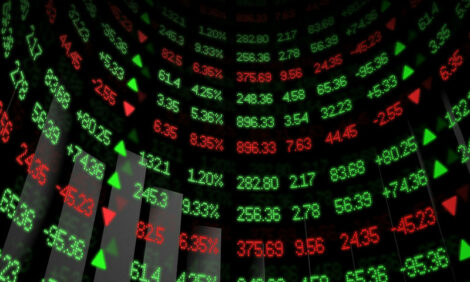



Can Pork Producers Handle 33.00 Corn?
INDIANA - Any positives for pork producers from higher corn prices will be more than offset by negative consequences, reports Chris Hurt.
 Chris Hurt Chris HurtExtension Economist Purdue University |
The pork industry's concerns about higher corn prices from the extraordinary growth in corn demand for ethanol appears to be moving from speculation to reality. Higher corn prices are expected to have at least two impacts in the coming year. First, market weights will likely drop, which is a positive for hog prices. However, this will be more than offset by the negative consequences of higher corn prices on costs.
In addition to escalating costs, there is also some expansion in the nation's herd, with the USDA reporting the market herd up over 1 percent and the breeding herd up nearly 2 percent on September 1, 2006 . This means pork production will rise by about 2 percent over the next 12 months. However, domestic pork supplies per person will only be modestly higher given growth in the U.S. population and continued growth in pork exports.
The nation's breeding herd expanded by nearly 2 percent, or 107,000 animals over the past year. Somewhat surprisingly, 65,000 of those animals are in the Eastern Corn Belt states with Indiana's breeding herd up 30,000 head, Illinois up 20,000, Ohio up 10,000 and Wisconsin up 5,000. The other area of expansion was the Plains states of South Dakota (15,000), Colorado (10,000), and Kansas (10,000). In the Western Corn Belt , the expansion in Missouri (15,000) was about offset by a decline in Minnesota (5,000), with Iowa unchanged.
The inventory of market hogs that will come to market this fall and winter are up about 1 percent. The supply of market animals for next spring and summer will come from farrowings this fall (up 1 percent) and winter (up 2 percent). Marketing weights are expected to begin to drop below year-previous levels for this fall and continue lower through next year due to much higher corn prices. Current estimates are for carcass weights to be down by 1.3 pounds, or .6 percent. Pork supplies are expected to be about 1 percent higher this fall and then nearly unchanged in the winter. The modest expansion in farrowings and increasing number of pigs per litter should move pork supplies nearly 3 percent higher for the spring and summer of 2007.
Pork trade continues to be a positive demand factor. For 2006, pork exports are expected to reach 3.0 billion pounds, or about 14 percent of domestic production. The current forecast from USDA is for exports to expand an additional 4 percent next year. This is a sharp slow down from the 2003 to 2006 period when exports expanded by a compound annual rate of 21 percent. The major question will be if Asian pork purchases will hold up with U.S. beef once again flowing. Hog prices averaged $52.40 per live hundredweight this summer. However, prices are expected to dip to the $45 to $48 range for quarterly averages this fall and winter. Prices for next spring and summer are expected to recover once again and average in a range from $48 to $52.
Over the past 12 months, U.S. corn prices averaged $2.03 per bushel. Futures markets are suggesting an average U.S. cash price of about $2.55 for the coming 12 months with prices expanding to the high $2.00 range by next summer. This means estimated hog production costs will rise from the very high $30s this fall to about $43 by next summer. The best news is that hog prices are still expected to be above these costs next summer and allow $6 to $7 per hundredweight of profit. If hogs are about $50 next summer, then corn prices would have to be near $4.25 per bushel to eliminate all profits with other costs holding near today's levels. But, these will be the highest hog prices of the year, with averages closer to $47.
The clear message for the pork industry is to be cautious on further expansion until more is understood about where corn prices are headed and just how the pork industry can utilize distiller's grains. The outlook today says the pork industry can pay $3.00 for corn, but more hogs and less corn is heading in a dangerous direction.
ThePigSite News Desk








